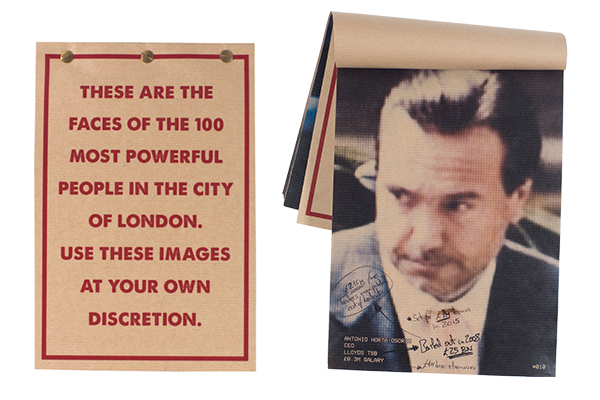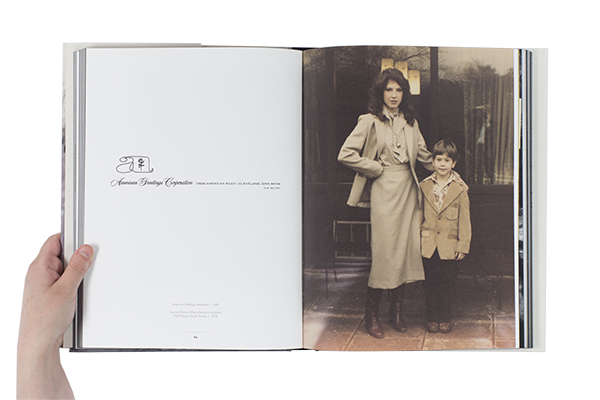What Does it Take to Make a Successful Photobook?
Each year, we call on photobook makers and artists to submit to the Paris Photo–Aperture Foundation PhotoBook Awards. From the hundreds of books that arrive from around the globe, a jury of industry leaders selects thirty-five shortlisted titles, and finally, in Paris, a final jury selects three winners. From there, the shortlisted books are exhibited around the world, ensuring maximum exposure for all titles, including the winners in each category. Below, six winning and shortlisted artists and editors reflect on their experience of being part of the prize and lend their advice to up-and-coming photobook makers.

Daniel Mayrit, You Haven’t Seen Their Faces, RIOT BOOKS, Madrid, 2015
Do you feel that being shortlisted (or winning) in a category of the PhotoBook Awards has had an impact on your work and the reception of your book?
Daniel Mayrit (Winner, First PhotoBook, 2015): To begin with, the book sold out within a day of receiving the prize. But I’ve also shown the work in over a dozen exhibitions in the last couple of years because most curators remember encountering the book for the first time at the PhotoBook Awards, or maybe read an interview published in the days after the announcement. So pretty much everything related to You Haven’t Seen Their Faces (2015) took off from there.
Amy Elkins (Shortlisted, First PhotoBook, 2016): Being shortlisted definitely boosted awareness for Black Is the Day, Black Is the Night (2016), and had an impact on book sales. And I’m quite certain it is what led to me being nominated for the Mack First Book Award, along with being shortlisted on a number of best of 2016 book lists.
Kazuma Obara (Shortlisted, First PhotoBook, 2014): I submitted Silent Histories (2014) as a handmade book in an edition of forty-five copies; being shortlisted allowed me to tell the story to a wider audience. The exhibition gave me an opportunity to meet a great publisher during Paris Photo. This led to making a new edition of the handmade book [published by Editorial RM in 2015].

Kazuma Obara, Silent Histories, Self-published, Kyoto, 2014
Myriam Ziehli (Shortlisted, First PhotoBook, 2012): Being shortlisted in 2012 was a really nice experience for my work and my career—I still was at school and [once I was shortlisted] I had orders from all over the world. For me, it was also a way of digging into the topic and strengthening my skills and my convictions that the book is a great way of showing my work, and distributing it easily.
Donald Weber (Shortlisted, First PhotoBook, 2012): I do not encourage artists to enter too many awards and prizes, but this is a legitimate prize and one I would certainly encourage all book makers to enter. There is a trade-off between competition organizers and those who enter; we feed off of each other’s legitimacy, which is a way to secure and sustain visibility. Of the hundreds of yearly awards, prizes, contests, and competitions every year, I’d say there are a handful of worthy, qualified outlets, and this is in the top. What the prize does is declare a certain stamp of approval, a benchmark of “good work” or quality to an audience that perhaps wasn’t familiar to begin with. It is not unlike the Oscars, where movies frequently tag themselves with “Academy Award Winning Actress,” etc. to give a shorthand of approval, a stamp of an authority that something is valid and worth your money.
Barbara Tannenbaum (Shortlisted, Photography Catalogue of the Year, 2015): Being shortlisted helped TR Ericsson’s career by drawing international attention to the first monograph and first major publication on his work. It similarly enlarged the audience and provided recognition for the achievements of the Cleveland Museum of Art’s programs and for my own work as a curator. How fabulous to know that the jurors, all highly respected professionals at the top of the field, have looked at the book! And if you make it to the shortlist, your book is presented to the most interested and knowledgeable audience, and enters into dialogue with the year’s other best productions.

Amy Elkins, Black Is the Day, Black Is the Night, Self-published, Los Angeles, 2016
Do you have any advice for photobook makers—especially for first-time book makers—in general?
Donald Weber: Yes! I am an inveterate supporter of the book dummy, regardless of how well polished it is. The craft of cutting and pasting makes me physically closer to my work, to understand the materiality and textural composition of the story I am trying to tell. Sticking things into a sequence helps me understand the rhythm of the book, how pictures react against each other and what they induce as you flip through it. These dummies become part of my “forensic imagination,” documents of thought, of communication, of emotion, of whatever it is I need to communicate with a designer in order to adequately represent what needs to be said.
I highly recommend the collaboration of others in this process, not just a designer, but also other artists, writers, and scientists. The collaborative mess of spitballing ideas is super fun and enlightening. What do others have to say, and how can it improve your work?
Myriam Ziehli: My advice is: think about the book as a medium and not only a way of putting images together. How does the content match conceptually with the book form? And second: think about the whole economy of the book making . . . it’s very important to keep in mind that the book form is strongly linked to distribution. So in my process, I try to make books that are cheap to produce and to sell. . . . I choose a paper and a book materiality that makes sense for me. But I would also be very happy to discover a copy printed in black and white and on another paper. . . . That’s why I put the PDFs of my books on my website with all the paper and size information.

TR Ericsson: Crackle & Drag,TR Ericsson, Arnaud Gerspacher, and Barbara Tannenbaum
Barbara Tannenbaum: Share your work and get others’ opinions, prepare mock-ups and then refine, refine, refine. Edit and sequence, then re-edit and re-sequence. Give it time to gel and mature.
Daniel Mayrit: Don’t rush it. Think carefully about the reasons for making every single decision regarding the making of the book, from design to binding to printing. Every single detail matters. Print as many dummies as you think necessary and do listen to other people’s opinions. That first idea you had when you first thought about making a book months ago isn’t necessarily the best one. It took me quite a bit to understand that, but collaborating with other people is the best thing that happened to the book.
Amy Elkins: There is such an amazing book making / book loving community. I would definitely recommend reaching out to book making friends you have and tapping into that resource. My friends who make and publish books were such an invaluable resource throughout the entire process. Book making and all that goes into it before and after can be overwhelming, but there are so many generous people out there. Don’t be afraid to reach out.
This year’s PhotoBook Awards submission deadline is September 15, 2017. Enter here.






















